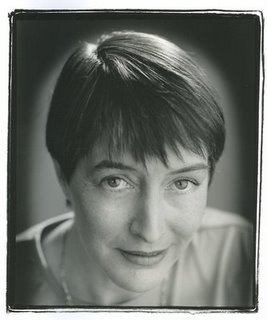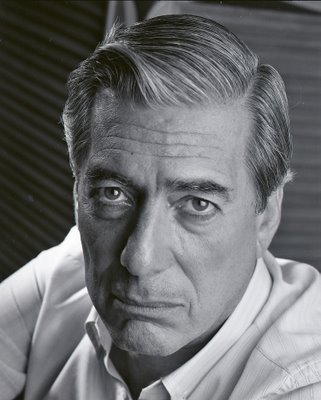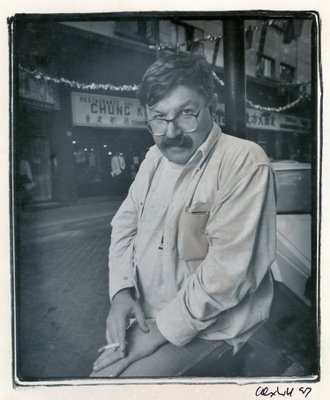
For 20 years beginning in 1980 Duthie Books and Celia Duthie (below, right) published in Vancouver little gem four times a year called The Reader. Celia Duthie would ask some of her friends and, some who were not, to review books for it. She had one command, a command she gave me once and which I always followed to the letter, "Try and pick a book you think you are going to like."

The whole idea for today's blog suddenly came to me last night when I read the following in Edmund Wilson's Memoirs of Hecate County, in the story The Millhollands And Their Damned Soul :
"We wondered whether you mightn't like to do a piece about the book in the Christmas number of the Booklover - I thought it would be right up your alley."
But this book by George Paine was the first that I ever refused to review for the Mullhollands. I realized that there would now be conditions imposed which I had not had to worry about in writing for the Booklover before, in the pre-Reader's Circle days: I should have to say the book was good and I should have to make it sound important.
I never had the problem the narrator of that story had. I reviewed quite a few books for Celia Duthie and I always picked books I was excited about. My editor at The Reader was Maja Grip, perhaps the most retentive editor I have ever met yet who gave me the freedom to have fun in my reviews. Even though the magazine is long gone most of the reviews live on in the archives of The National Library of Canada Electronic Collection. My favourite of all my reviews is a double one I made which included books by Mario Vargas Llosa and Paco Ignacio Taibo II. The original article did include the photo of Mario Vargas Llosa that is here. I am including a photograph that I took of Paco Ignacio Taibo II in the two-block long Chinatown in Mexico City.
The Reader XIV II - A Fish In The Water & Four Hands
--------------------------------------------------------------------------------
A Fish In The Water
By Mario Vargas Llosa
Translated by Helen Lane.
Farrar Straus Giroux, New York, 1994, 532 pp., $32.95
Four Hands
By Paco Ignacio Taibo II
Translated by Laura C. Dail.
St. Martin's Press, New York, 1994, 378 pp., $31.99
Reviewed by Alex Waterhouse-Hayward
If you were to approach a Hollywood producer with a screenplay based on a true story in which a Peruvian writer marries, as a minor, an older aunt; writes about it in a novel (Aunt Julia and the Scriptwriter), that is made into a movie (Tune in Tomorrow, 1990) with a screenplay by a highly regarded Ghanian author (William Boyd) who changes Lima to New Orleans, you would probably be ejected before you could proceed to add that the novelist subsequently dumps his aunt in Paris for his first cousin whom he marries. At the Mexico City premiere of a movie based on his novel Captain Pantoja and the Special Service, he punches and floors a Colombian Nobel Laureate (Gabriel García Márquez). He writes many acclaimed novels until as a restless 50-year-old he ponders the possibility of writing a comedy about an impresario who finds a childhood friend whom he thought was dead, alive, well and now a woman in a suite at the Savoy in London. The project is shelved in favour of running for President of Peru, a job he almost wins but for the fact that he eats a not-so-fresh ceviche in Piura and discounts, until too late, the competition from a Protestant Japanese/Peruvian agronomist dubbed the chinito (the little Chinaman).
In A Fish in the Water Vargas Llosa tells his story from his birth in Arequipa until age 22 while deftly alternating with a fascinating blow-by-blow account of his 1987 to 1990 unsuccessful run for the Peruvian presidency. "It is true that if the presidency of Peru had not been the most dangerous job in the world, I jokingly told a journalist, I would have never been a candidate." On a lonely Piura beach in August 1987 Vargas Llosa ponders the historic inability of Peru to improve itself: "That historical failure seemed to me to be a sort of sign of a country which, at some moment in its trajectory, fucked itself all up."
You wouldn't fare any better with the Hollywood producer if you were to return with a different story about a Mexican/Spanish writer (Paco Ignacio Taibo II) who writes acclaimed thrillers (An Easy Thing, Some Clouds, No Happy Ending), whose hero, Héctor Belascoarán Shayne, is a jazz-loving Chinese food enthusiast Mexican/Basque/ Irish private dick in Mexico City, who singlehandedly manages to escape from the clutches of corrupt judiciales, or the equally corrupt government officials of the Partido Revolucionario Institucional. Realizing you are not getting anywhere you explain that Taibo has now written something completely different. In Four Hands, Arthur Stanley Jefferson (known after 1920 as Stan Laurel) witnesses, while on a binge with 9 bottles of Bols gin, Pancho Villa's assassination in Parral, Chihuahua. Stoyan Vasilev, an 80-year-old veteran of the Spanish Civil War, is an unwitting pawn of a complicated anti-Sandinista plot. The plot is thwarted by Longoria, a twice-dead Spaniard buddy of Vasilev's who lives in the Sanatorio Español on Avenida Ejército Nacional in Mexico City. The interlacing plot includes Leon Trotsky, writing a thriller while working on his Stalin biography, and two journalists (who work together---hence the four hands), one Mexican and fat, Julio (who is obsessed with Laurel & Hardy films); the other Jewish American and thin, Greg, whose uncle was Houdini's psychiatrist).

To those readers who are used to the linear approach of most contemporary fiction, Four Hands can serve as an exciting initiation into the more complex but in the end very satisfying style of novels such as Llosa's Conversation in the Cathedral or to what may have been the first example of early hypertext, Julio Cortázar's Hopscotch. That might then lead to the discovery of such Latin American writers as Augusto Roa Bastos, Alejo Carpentier, or Gabriel García Márquez.
Somehow the Hollywood producer is convinced and the green light is given on the above projects so I decide to cash in on my own personal experiences. This reviewer used to play ping pong in the early 60s in the premises of the Club Mundet. This is an athletic club in Mexico City on Avenida Ejercito Nacional, not far from the Spanish Hospital, whose members were mostly exiled Spanish Republicans. One of the better challenges was playing against a very short spectacled kid called Paco. He was so short that I could barely see his eyes over the edge of the table. He was interested in my interest in photography and wanted me to accompany him to photograph the one block-long Chinatown on Dolores Street.

In 1990 I went to Lima to ask Mario Vargas Llosa why it is that he obsessively describes red geraniums growing in the front gardens of the houses in many of his Lima novels. His answer was, "Vasco da Gama returning from the Cape of Good Hope took the geranium back to Portugal. From there it was taken to Extremadura in Spain where it thrived in the desert environment. The Conquistadores Cortez and Pizarro brought the plant to America. In Lima nothing grows except the geranium. It should be our national flower as it thrives in adversity." Vargas Llosa was not feeling well (see photo) so he did not attend a campaign talk at the Peruvian/Japanese Society. The members did not believe the story of the not-so-fresh ceviche he had eaten in Piura. Because of his sickness his campaign manager decided to make some TV spots in Llosa's back garden in Barranco. It was soon transformed to look like a pueblo joven (slum). An appropriately "dirtied" little boy was brought in to pose.
As Belascoaran Shayne asks in Sueños de Frontera, 1990, in a Taibo tribute to Vargas Llosa, "A qué horas se jodió todo? When did it fuck itself all up?"
I know.
Alex Waterhouse-Hayward is a Vancouver photographer of Latin American Ancestry.
--------------------------------------------------------------------------------
{ Literascape } { What's New } { The Reader } { Fall 1994 }
Copyright © 1996 Duthie Books Ltd. All Rights Reserved. Literascape is a Trademark of Duthie Books, Ltd.
Here for a delightful review of a Patrick O'Brian novel by Marv Newland.
The Reader was a lovely little booklet/magazine printed in very good stock. It was a little jewel full of passionate reviews by reviewers who loved to read and picked books by their favourite authors or authors that wrote about something that they, too had a passion for. Witness the above loving review of O'Brian's novel by a nautically obsessed Marv Newland. This sort of review does not appear, to my knowledge, in any other Vancouver publication. At one time even the Vancouver Sun occasionally paralleled The Reader. I can remember the day day sometime in 1998 when I received a phone call from then Arts Editor, Max Wyman, who said, "Alex, I have here A History Of The Breast by Marilyn Yalom. I think this would be right up your alley. Would you want to review it?" Of course I was interested and, yes, I did review it. Max Wyman, Celia Duthie were are you?






